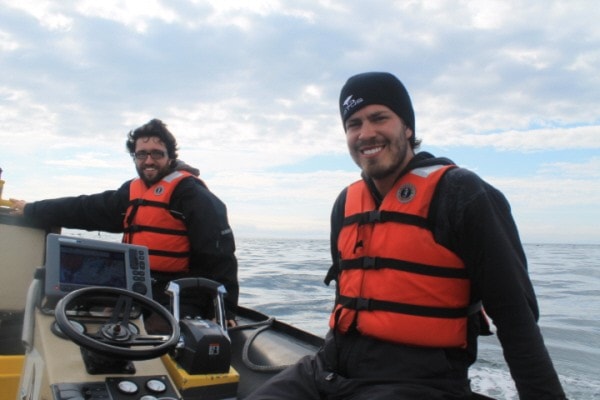by Scott Boyce - Special to Sylvan Lake News
The zodiac had been prepped, the sun was climbing the rungs of the baby blue sky and we had received word over the radio that a pod of orcas had been spotted in the area. It was my first trip out on the waters of the Salish Sea off southeastern Vancouver Island as we headed to the location where these striking marine mammals had been spotted. Yes… it was going to be a brilliant day!” My initial thoughts could hardly do justice to the journey I had begun.
The southern stretch of the B.C. coast hosts some of the most diverse and productive waters in the world. Of the many plants and animals that call these waters home some 25 species of whales (also called cetaceans) forage, mate, communicate, play and travel across this temperate coastline. Whales can be classified into two groups: baleen whales, which are large filter feeders such as blue whales and humpbacks, and toothed whales, such as sperm whales and all porpoises and dolphins (including the orcas we were going to accompany throughout the day).
Arrival on site was signified by the myriad commercial whale watching and private boats in the area. My heart dropped as Jordan the zodiac operator, fellow intern Angelica, and I began scanning the water line around the zodiac for the elusive creatures. At the moment the first dorsal fin could be seen in the distance all the cluttered thoughts that had been circling my mind fell away and I was left star struck in awe. A sense of universal oneness crept across my being and I was overtaken by the orcas’ majestic beauty. They were here and we were alive together.
B.C. is home to the most well studied wild orca populations in the world. Orcas, the largest members of the dolphin family, can be classified into three main groups in B.C. waters: residents, transients, and off-shores. Each group has its own unique feeding habits, cultural traditions, and language. Residents are the most easily observed orcas and feed primarily on salmon. Transients, often referred to as ‘the wolves of the sea’, are the most sought after by documentary filmmakers because these orcas hunt marine mammals, like seals and other whale species, in small, well-calculated pods. Off-shores are the least studied of the three groups but it is believed that their diet consists almost entirely of sharks, supplemented by other large ocean fish like halibut, due to the extremely high level of tooth wear caused by the ‘sandy’ texture of shark skin.
We had located our focal group of whales that we would be studying for the next few hours. All three of us are involved with the Cetus Research & Conservation Society, a local non-profit whale research and conservation organization based out of Victoria. Data was being collected on boat traffic around the whales, which will be used by Fisheries and Oceans Canada for determining future orca protection policies. Direct observational data was also to be taken on the whales such as numbers, location, behaviours observed, etc.
The day was growing long, I had witnessed many whale spectacles including the fabled spy-hop (a behaviour where they come vertically out of the water head first, have an above water look around, and then submerge again in a manner which mirrors their emergence), and it was time to conclude my first day out with the orcas.
We began our 45 minute ride over the waves back to the marina and I began to reflect on everything that had happened throughout the day. The whales are a definite inspiration as my anticipation was growing for my next whale adventure … early morning the very next day.
For more information on whale conservation in and around Vancouver Island, ‘Be Whale Wise’ whale watching guidelines and to find out how you can get involved please visit the Cetus Society’s website at http://cetussociety.org/ or to make a donation please visit http://www.indiegogo.com/CetusSociety.
Scott Boyce moved to Sylvan Lake when he was 13 and attended C. P. Blakely Elementary for half a school year before heading to H. J. Cody where he completed his high school education. Shortly after, he began his first post-secondary education experience at Red Deer College and moved on to the University of Alberta to finish a Bachelor degree in Environmental and Conservation Sciences. Since finishing his degree in 2009, Scott has gained much experience working with species at risk including Sprague’s pipits in Saskatchewan, Olive Ridley sea turtles on the Pacific coast of Mexico, and most recently with orcas and other whales that inhabit the ocean waters of B.C. He currently resides in Saanich on Vancouver Island but still visits family and friends in Sylvan Lake regularly.
